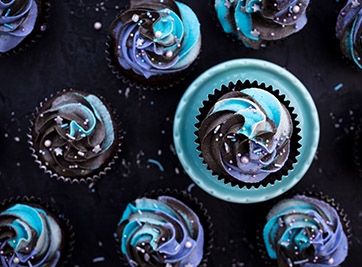
Identifiers
Indigo Carmine
INS No. 132
FD&C Blue No. 2
E 132
CI Food Blue 1
Physical Description
Indigotine occurs as a blue-brown to red-brown powder or as granule. It is an indigoid dye, consisting of a mixture of disodium 3,3′-dioxo-[delta2,2′-biindoline]-5,5′-disulfonate (the principal component), disodium 3,3′-dioxo-[delta2,2′-biindoline]-5,7′-disulfonate (an isomer) and subsidiary coloring matters and may be converted to the corresponding aluminum lake.
Common Uses
Indigotine is distinguished by its rich royal blue color, and can be used for coloring foods and drugs, including dietary supplements, blueberry bagels, breakfast cereals, cakes and cupcakes, candies including chocolate, chewing gum, dairy products, decorations for baking, frozen treats, and sauces and seasonings.
Specifications
US FDA
Commission Regulation (EU) No 231/2012
Codex GSFA Provisions
Indigotine (INS No. 132) is added to foods and beverages at concentrations up to a maximum permitted level (MPL) as adopted by the Codex Alimentarius Commission. There are more than 50 food categories for which MPLs for indigotine have been adopted in the General Standard for Food Additives.
Regulatory Approvals
Safety Reviews
Safety Evaluation of certain food additives (Eighty-sixth report of the Joint FAO/WHO Expert Committee on Food Additives) WHO Food Additives series no. 77, 2020. Available online
EFSA ANS Panel (2014) Scientific opinion on the re-evaluation of Indigo Carmine (E 132) as a food additive. EFSA Journal, 12(7), 3768 [51 pp]. Available online